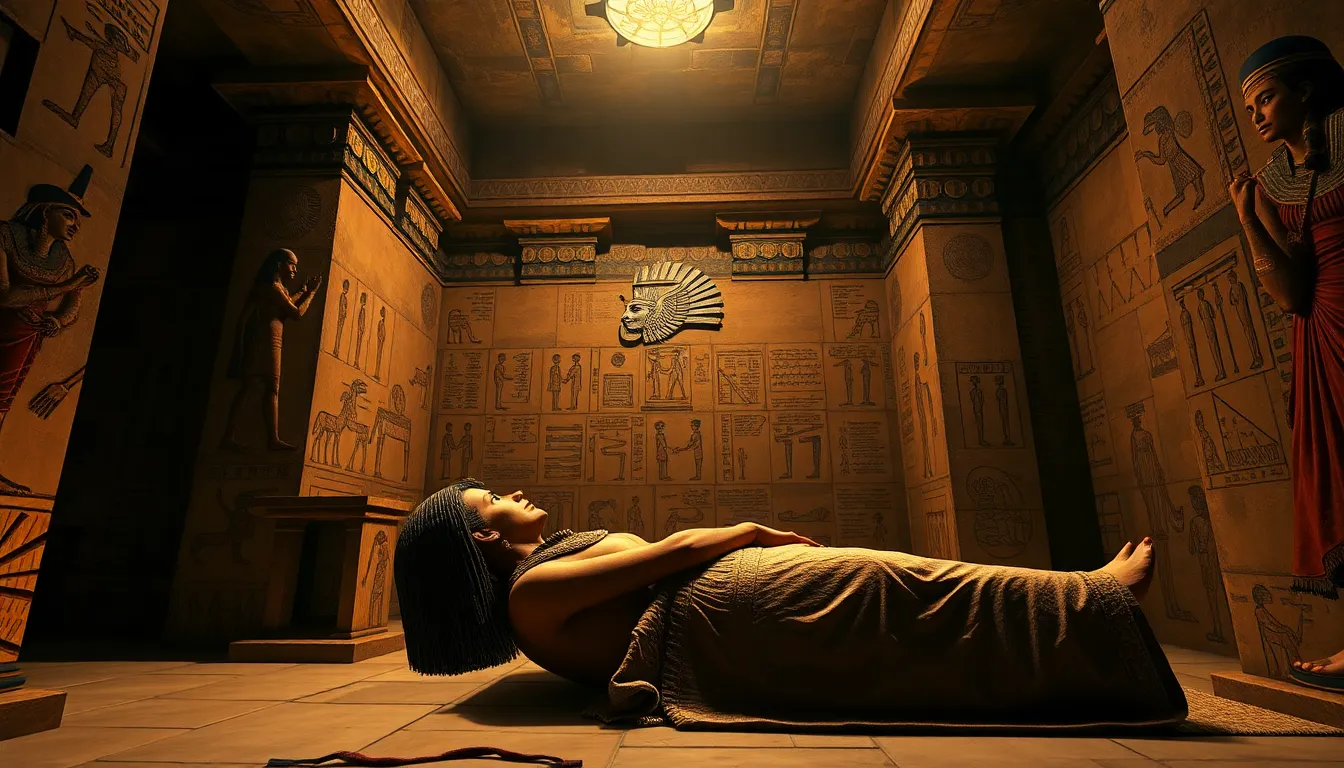Exploring the Tomb of Nefertari: A Royal Burial of Beauty
I. Introduction
Nefertari, one of the most renowned queens of ancient Egypt, holds a significant place in the annals of history. She was the beloved wife of Ramses II, often referred to as Ramses the Great, and her legacy extends beyond her role as a queen to embody the beauty and power of ancient Egyptian femininity.
The tomb of Nefertari, located in the Valley of the Queens, is a remarkable archaeological site that offers invaluable insights into the royal burial practices and the artistry of ancient Egypt. Its discovery and subsequent studies have contributed significantly to the broader field of Egyptology.
This article aims to explore the historical context of Nefertari, the discovery of her tomb, its architectural features, the artistic masterpieces contained within, the challenges of preservation, and its lasting cultural significance.
II. Historical Context of Nefertari
Nefertari was not only the wife of Ramses II but also a powerful figure in her own right. She was likely born into a noble family, and her marriage to Ramses II solidified her status. As queen, she played a crucial role in the political and cultural life of Egypt during the 19th Dynasty.
The political landscape during her reign was characterized by military campaigns and diplomatic relationships with neighboring regions. Ramses II was known for his extensive building projects and for establishing Egypt as a dominant power in the ancient world.
Insights into the daily life of royal families during this time reveal a blend of opulence and responsibility. Queens like Nefertari were not just ceremonial figures; they were integral to the religious and political life of Egypt.
III. Discovery of the Tomb
The tomb of Nefertari (QV66) was discovered in 1904 by the Italian archaeologist Ernesto Schiaparelli in the Valley of the Queens. This area served as the burial ground for queens and royal children during the New Kingdom period.
Key figures involved in the exploration included Schiaparelli himself, who meticulously documented the findings, and various teams of archaeologists who continued to study the site over the years.
Initial findings revealed a wealth of artifacts and stunning wall paintings that provided a glimpse into the life and beliefs of Nefertari. These discoveries had a profound impact on Egyptology, as they underscored the intricacies of royal burial practices and the artistry of the period.
IV. Architectural Features of the Tomb
The layout of Nefertari’s tomb is both intricate and symbolic. The tomb consists of a long corridor leading to a burial chamber, with various side chambers that may have been used for storing offerings and other items.
Unique architectural elements of the tomb include:
- Vividly painted walls showcasing scenes of Nefertari’s journey to the afterlife.
- Elaborate ceilings adorned with celestial motifs, representing the night sky.
- A well-preserved burial chamber that reflects the grandeur of royal tombs.
The symbolism found in the tomb’s structure and materials often reflects the ancient Egyptians’ beliefs about the afterlife, including the importance of the journey through the underworld.
V. Artistic Masterpieces Within the Tomb
The wall paintings and reliefs within Nefertari’s tomb are considered some of the finest examples of ancient Egyptian art. They depict various themes and narratives that were significant in the context of her burial.
The themes include:
- Scenes of Nefertari in the presence of deities, illustrating her divine connection.
- Images of the queen engaging in rituals related to the afterlife.
- Depictions of the natural world, showcasing flora and fauna that held symbolic meaning.
Art played a vital role in ancient Egyptian burial practices, serving not only as decoration but also as a means to ensure the deceased’s safe passage to the afterlife.
VI. Preservation Efforts and Challenges
Today, the tomb of Nefertari faces numerous challenges regarding its preservation. The current state of the tomb and its artifacts is a concern for archaeologists and conservators alike.
Some of the key challenges include:
- Environmental factors such as humidity and temperature fluctuations that threaten the integrity of the paintings.
- Increasing tourism, which can lead to wear and damage to the site.
- The need for ongoing maintenance and restoration efforts to keep the tomb accessible and safe.
Efforts by archaeologists and conservators aim to maintain the site, including climate control measures and public awareness campaigns to promote responsible tourism.
VII. Cultural Significance and Legacy
Nefertari’s impact on ancient Egyptian culture is profound. She is often seen as a symbol of beauty and power, and her tomb reflects the high status and reverence afforded to queens in ancient Egyptian society.
The tomb has influenced modern perceptions of ancient Egypt, providing a tangible connection to the past that captivates the imagination of visitors and scholars alike. It serves as a reminder of the sophistication and artistry of ancient Egyptian civilization.
Moreover, tourism plays a significant role in the site’s preservation. While it helps fund conservation efforts, it also poses risks that must be carefully managed to ensure the longevity of Nefertari’s final resting place.
VIII. Conclusion
In conclusion, the tomb of Nefertari is a crucial site for understanding royal life and burial practices in ancient Egypt. Its artistry, architectural features, and the historical context of its queen offer invaluable insights into the culture of the time.
The enduring legacy of Nefertari and her tomb continues to inspire researchers, artists, and visitors, ensuring that the beauty and significance of this royal burial site remain a cherished aspect of Egypt’s rich history.
Future research opportunities abound as ongoing explorations in the Valley of the Queens may uncover further secrets of Nefertari and her contemporaries, contributing to our understanding of this fascinating era in ancient Egyptian history.




